39 how to read uk nutrition labels
Food labels - NHS Some front-of-pack nutrition labels use red, amber and green colour coding. Colour-coded nutritional information tells you at a glance if the food has high, medium or low amounts of fat, saturated fat, sugars and salt: red means high amber means medium green means low In short, the more green on the label, the healthier the choice. How to read a food label | Dietitian UK A food label should be able to tell you: what the food is. a 'best before' or 'use by' date. how it should be stored. provide cooking directions, if necessary. a list of the ingredients in order of most to least in quantity. any allergens such as milk, eggs, nuts, wheat written in bold.
How to Read a Nutrition Label: Tips from a Registered Dietitian "You should look for foods that are low in saturated fat, trans fat and added sugars, while aiming to eat more foods that are high in vitamin D, calcium, iron, potassium and fiber." Tip 4: Review the amount of added sugars. There are two types of sugars in the food you eat. The first occur naturally and are found in foods such as fruits and milk.

How to read uk nutrition labels
Nutrition labelling | Food Standards Agency Mandatory information. When providing nutrition information, you are required to declare: energy value. amounts of fat, saturates, carbohydrate, sugars, protein and salt. The content of the mandatory nutrition declaration can be supplemented with an indication of the amounts of one or more of the following: monounsaturates. Food labelling - get into the habit of checking the label Look for five key points on the label: 1. Energy The terms 'kJ' and 'kcal' (calories) tell you how much energy is in a product. Women need an average of 2,000 kcal a day and men need 2,500 kcal on average. 2. Saturates Saturates is another word for saturated fat. This section tells you about the amount of saturated fat in the product. 3. Salt Understanding food labels | Diabetes UK The labels show how many calories are in the food or drink and are also colour coded to show whether the food is low (green), medium (amber) or high (red) in fat, saturated fat, sugar and salt. The information on the front of the pack also tells you how the portion of the food contributes to the Reference Intake (RI) of an adult.
How to read uk nutrition labels. How to Read Nutrition Information → Food Labels EXPLAINED Learn how to read nutrition information on another level! Food labels EXPLAINED.Get our Fit Mother 30-Day Fat Loss Program here → ... How to read nutrition labels? To calculate this, divide the calories from fat in a food or drink by the total calories (found on the product's food label) and multiply by 100. Divide 60 by 300 and multiply by 100 if a 300-calorie food contains 60 calories from fat. How much is too much sugar on a nutrition label What should you look for on a nutrition label first? How to Read a Nutrition Label - dummies Dieting For Dummies. Explore Book Buy On Amazon. Nutrition labels give you important information about the fat, calories, and fiber in your food. By knowing how to interpret percentage daily value numbers on labels, you can adjust your diet and portion sizes for better weight control and good health. How to read a nutrition label - The Food Medic Food companies can choose to provide a traffic light label or just the energy (calorie) content of the food per 100g (or 100ml for fluids) or per 100g/ml and per portion of food (1). Traffic light labels include the following information per suggested serving size: Energy Fat Saturated fat Sugar Salt
› water-drinks-nutritionWater, drinks and your health - NHS Checking the nutrition labels on soft drinks such as fruit juices and fizzy drinks can help you make healthier choices. The Eatwell Guide says we should drink 6 to 8 cups or glasses of fluid a day. Water, lower-fat milk and sugar-free drinks, including tea and coffee, all count. Find out more about food labels. Drink plenty of water How to read a UK or EU nutrition label - Hooley Brown Although it's colour-coded like the UK traffic light system, Nutri-Scores are calculated as an overall rating after valuing positive nutrition (fibre, protein, fruits, vegetables, nuts and healthy oils) against nutrients to limit or avoid (sugars, saturated fats and salt). en.wikipedia.org › wiki › Horse_meatHorse meat - Wikipedia Horse meat gained widespread acceptance in French cuisine during the later years of the Second French Empire.The high cost of living in Paris prevented many working-class citizens from buying meat such as pork or beef; in 1866, the French government legalized the eating of horse meat, and the first butcher's shop specializing in horse meat opened in eastern Paris, providing quality meat at ... How To Read Nutrition Labels - October 2022 - Trending.review Step 1: Check the Serving Size. Learning how to read nutrition labels is an important first step in learning about what you're eating. The serving size on the package needs clarification, so make sure it matches up with your desired intake amount before consuming any products containing these details.
How to Read a Nutrition Label? (Things to Consider Explained) It is compulsory by law and would make the understanding of the rest of the label easy. Calories: The next important section on the label is the calorie count. Be sure that the calorie count is about the serving size or per serving. You have to be conscious about it because you can only consume a particular number of calories every day. › nutrition › 15-ways-to-lower14 Easy Ways to Lower Blood Sugar Levels Naturally - Healthline Nov 30, 2021 · read food labels and check the serving sizes; ... Read this article in Spanish. ... R.D., CDE, Nutrition — Updated on November 30, 2021. Read this next. 12 Simple Tips to Prevent Blood Sugar Spikes. Reading labels | Diabetes UK Always look at the 'total carbohydrate' on the label when carb counting. This will make sure you are counting both the complex (starchy) and simple (sugary) carbs in your food. Both will raise your blood glucose (blood sugar) levels, and need to be matched with insulin. › looking-at-labelsLooking at labels - British Nutrition Foundation The majority of pre-packed products (by law) provide a nutrition label on the back of pack. This back-of-pack information must be displayed as per 100g or 100ml of the product, but may also be additionally displayed as per portion. Generally, this information will be displayed like the example below:
How To Read Nutrition Labels - Mayo Clinic Diet All the nutrition info — including calories — refer to the amount in one serving. 2. Check the calories in one serving 40 calories is low, 100 calories is moderate, 400 calories or more is high. Remember: If you eat multiple servings, you'll need to multiply the calories by the number of serving that you eat. 3. Check the % Daily Value
abcnews.go.com › internationalInternational News | Latest World News, Videos & Photos -ABC ... Oct 19, 2022 · Get the latest international news and world events from Asia, Europe, the Middle East, and more. See world news photos and videos at ABCNews.com
Your guide to understanding nutrition labels: How to read the back of ... THE NUTRITION PANEL Serving size When reading the Nutrition Information Panel (NIP), pay close attention to the serving size, the number of serves per package and a breakdown of nutrients in the ...
How to Read Food Labels | Institute of Health Sciences Some front-of-pack nutrition labels use red, amber and green colour-coding. Colour-coded nutritional information, as shown in the image above, tells you at a glance if the food has high, medium or low amounts of fat, saturated fat, sugars and salt. Red means high Amber means medium Green means low
How to understand Nutrition food labels (EU/UK) - Gemma Sampson Salt (sodium) Salt free - less than 0.01g salt per 100g (0.005g sodium) Low salt - less than 0.3g salt per 100g (0.01g sodium) High salt - more than 1.5g salt per 100g (0.6g sodium)
en.wikipedia.org › wiki › Packaging_and_labelingPackaging and labeling - Wikipedia Information transmission – Packages and labels communicate how to use, transport, recycle, or dispose of the package or product. With pharmaceuticals, food, medical, and chemical products, some types of information are required by government legislation. Some packages and labels also are used for track and trace purposes.
Reading Nutrition Labels - Cronometer Serving sizes measured in grams, including a 100g serving size option Vitamin C, Vitamin A, Calcium, Iron %DV (based on 2000 kcal diet) This percentage is listed as the % of the RNI which is different than that of American targets. We will always report the numeric value (not the percent) in CRDB foods. Carbohydrates reported do NOT include fibre.
Differences between EU and US nutrition labels go far beyond ounces and ... In the US, nutritional labels must indicate the number of servings per container - so calories are broken down based on how many slices of bread come in a package, or how many 12-chip portions a...
How To Read Food and Beverage Labels - National Institute on Aging At the top of the Nutrition Facts label, you will find the total number of servings in the container and the food or beverage's serving size. The serving size on the label is based on the amount of food that people may typically eat at one time and is not a recommendation of how much to eat. Read more about serving and portion sizes.
› healthy-sustainable-dietsProtein - British Nutrition Foundation We need protein to help the body grow and repair itself. Proteins keep our bones and muscles healthy throughout our lives. Protein is found in animal protein sources such as meat, dairy, fish and eggs and plant protein sources such as beans, lentils, nuts and seeds.
How To Read UK Food Labels - Louise Digby Nutrition Here's my three-step crash course on reading the Nutrition Information table. Step 1: Serving Size The absolute most important part of the Nutrition Information table is to note the serving size. Manufacturers often strategically choose the serving size to make the rest of the table look good. Small serving = small calories/fat/carbs.
This Is How to Read a Nutrition Facts Label on the Keto Diet Some labels show both, but it's simpler to assess using the percentage figure. You may also hear about RDI (Reference Daily Intake) and DRV (Daily Reference Values), which essentially mean the same thing as Percent Daily Value [ * ]. Ingredients List The ingredient list is usually found below or next to the nutrient breakdown.
Nutrition labels - Food A Fact Of Life Nutrition labels, including both mandatory and voluntary labelling, are in place to help us to make informed food and drink choices. It is important for pupils to be able to recall the key aspects of labelling information and apply to make an informed choice. This area covers: food labelling; using food labels to help make healthier choices.
How to Read Food Labels Without Being Tricked - Healthline Nutrition labels state how many calories and nutrients are in a standard amount of the product — often a suggested single serving. However, these serving sizes are frequently much smaller than...
Nutrition labels: how to read them • Heart Research Institute UK The nutrition information panel is a table that tells you how much energy, protein, fats, carbohydrates, sugars and other nutrients the food contains. The key to interpreting a label is to not focus too much on an individual nutrient and neglect other aspects of the food.
How to Understand and Use the Nutrition Facts Label | FDA When looking at the Nutrition Facts label, first take a look at the number of servings in the package (servings per container) and the serving size. Serving sizes are standardized to make it...
Understanding food labels | Diabetes UK The labels show how many calories are in the food or drink and are also colour coded to show whether the food is low (green), medium (amber) or high (red) in fat, saturated fat, sugar and salt. The information on the front of the pack also tells you how the portion of the food contributes to the Reference Intake (RI) of an adult.
Food labelling - get into the habit of checking the label Look for five key points on the label: 1. Energy The terms 'kJ' and 'kcal' (calories) tell you how much energy is in a product. Women need an average of 2,000 kcal a day and men need 2,500 kcal on average. 2. Saturates Saturates is another word for saturated fat. This section tells you about the amount of saturated fat in the product. 3. Salt
Nutrition labelling | Food Standards Agency Mandatory information. When providing nutrition information, you are required to declare: energy value. amounts of fat, saturates, carbohydrate, sugars, protein and salt. The content of the mandatory nutrition declaration can be supplemented with an indication of the amounts of one or more of the following: monounsaturates.

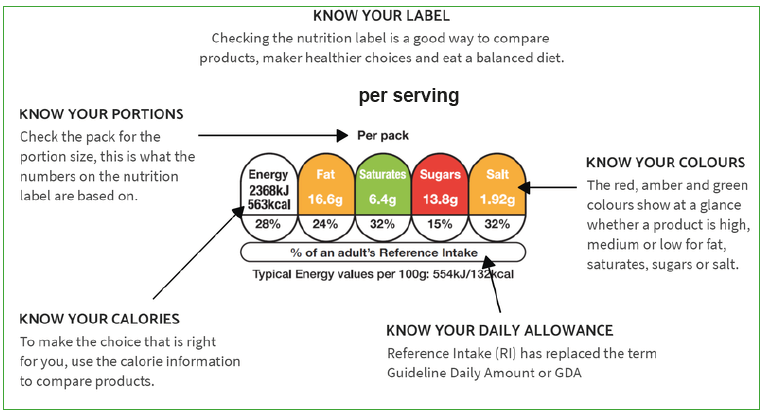






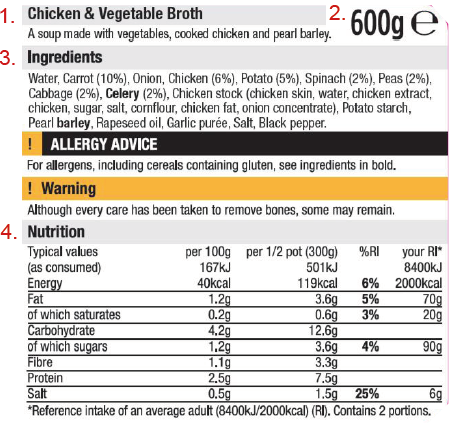



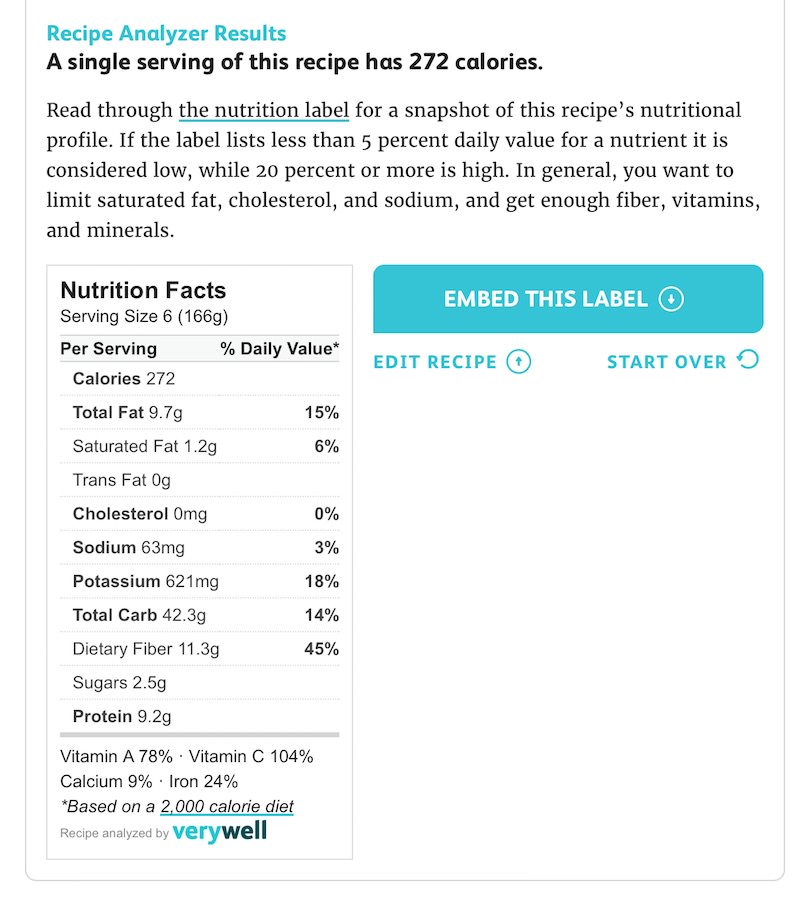
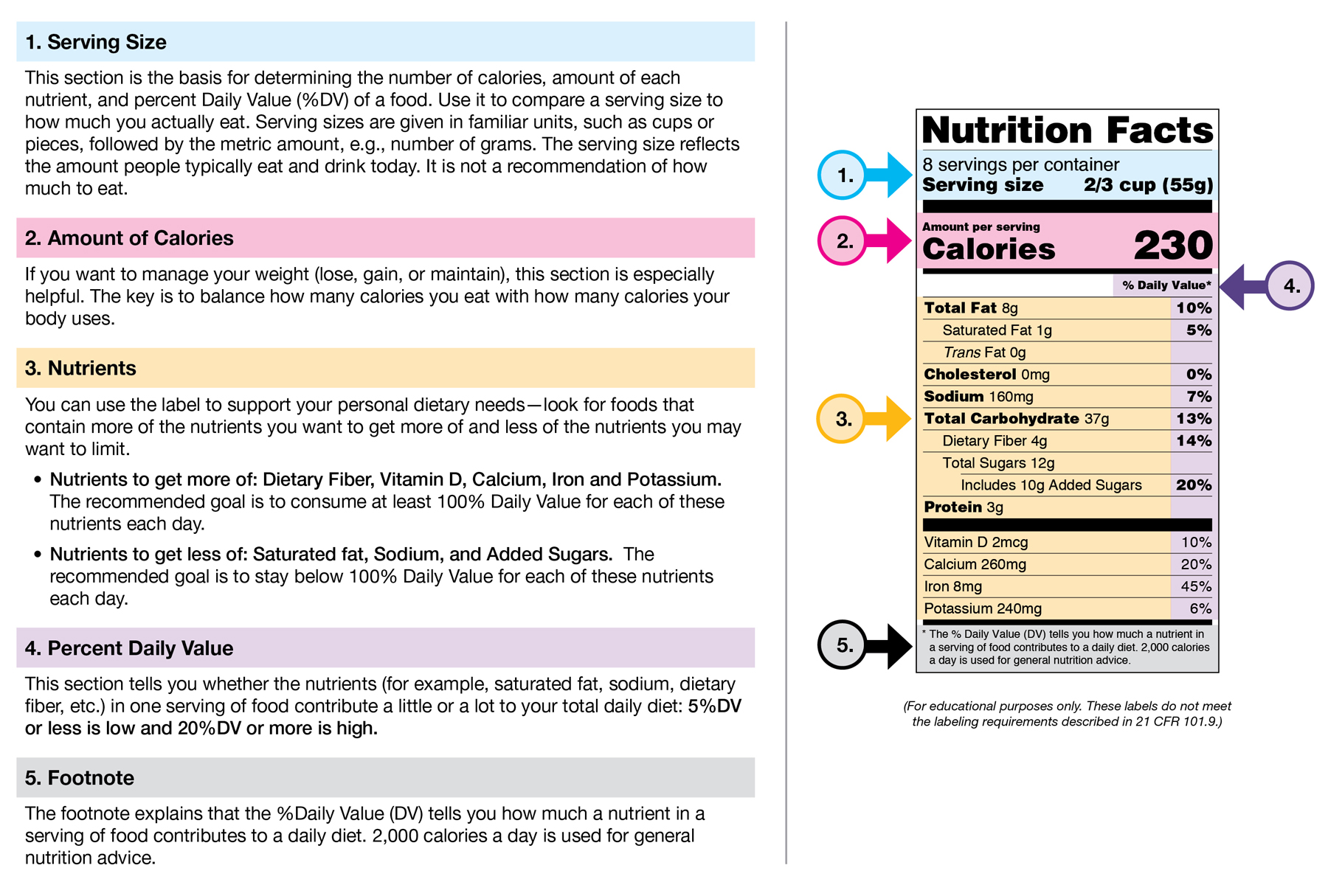
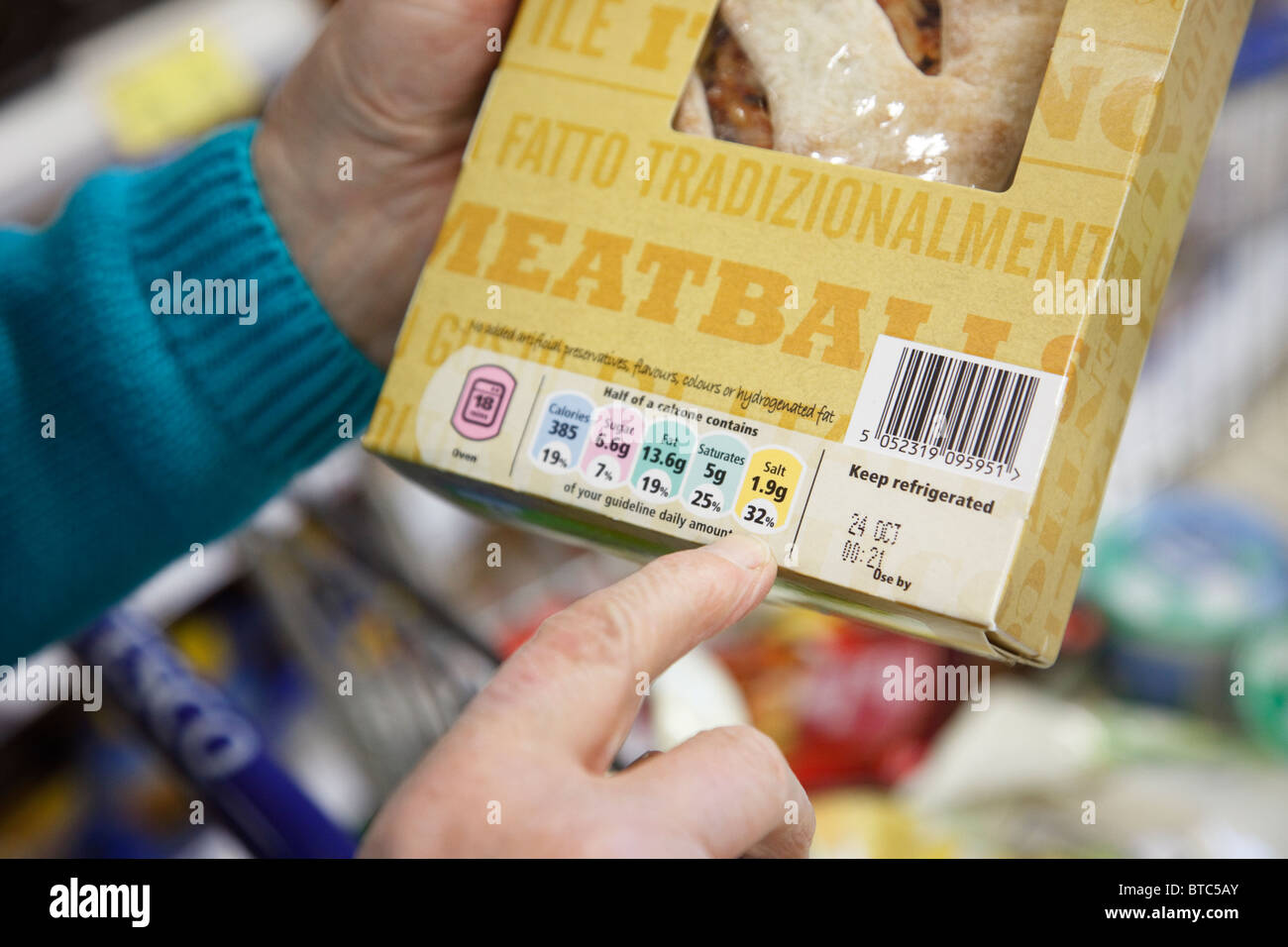





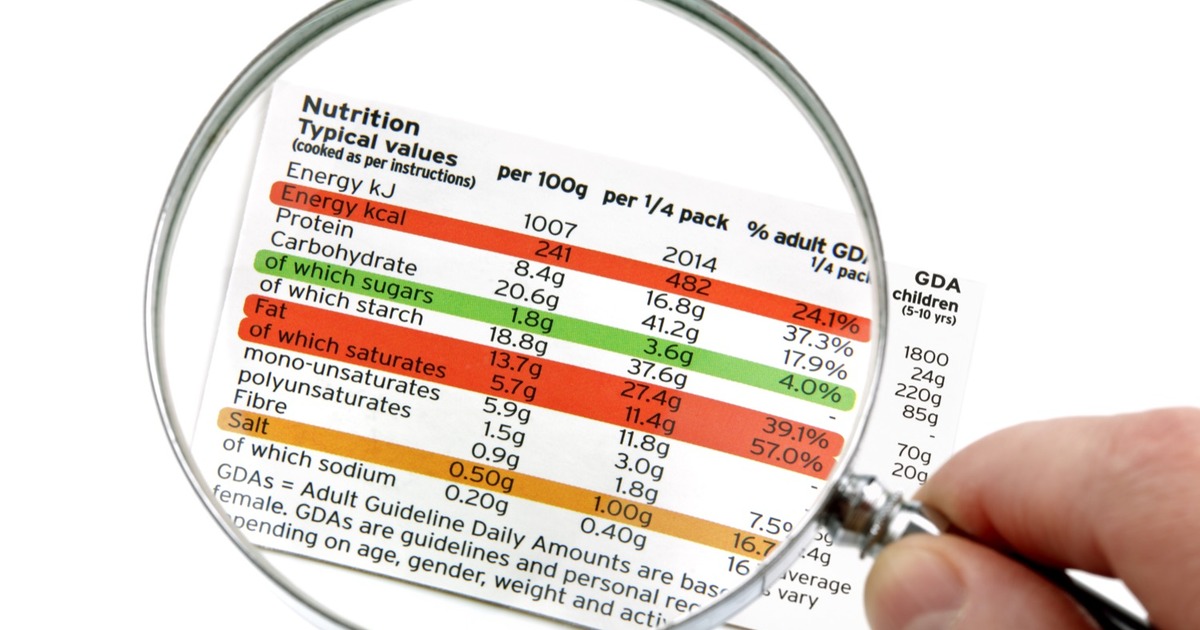






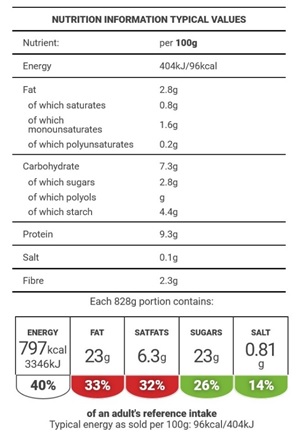

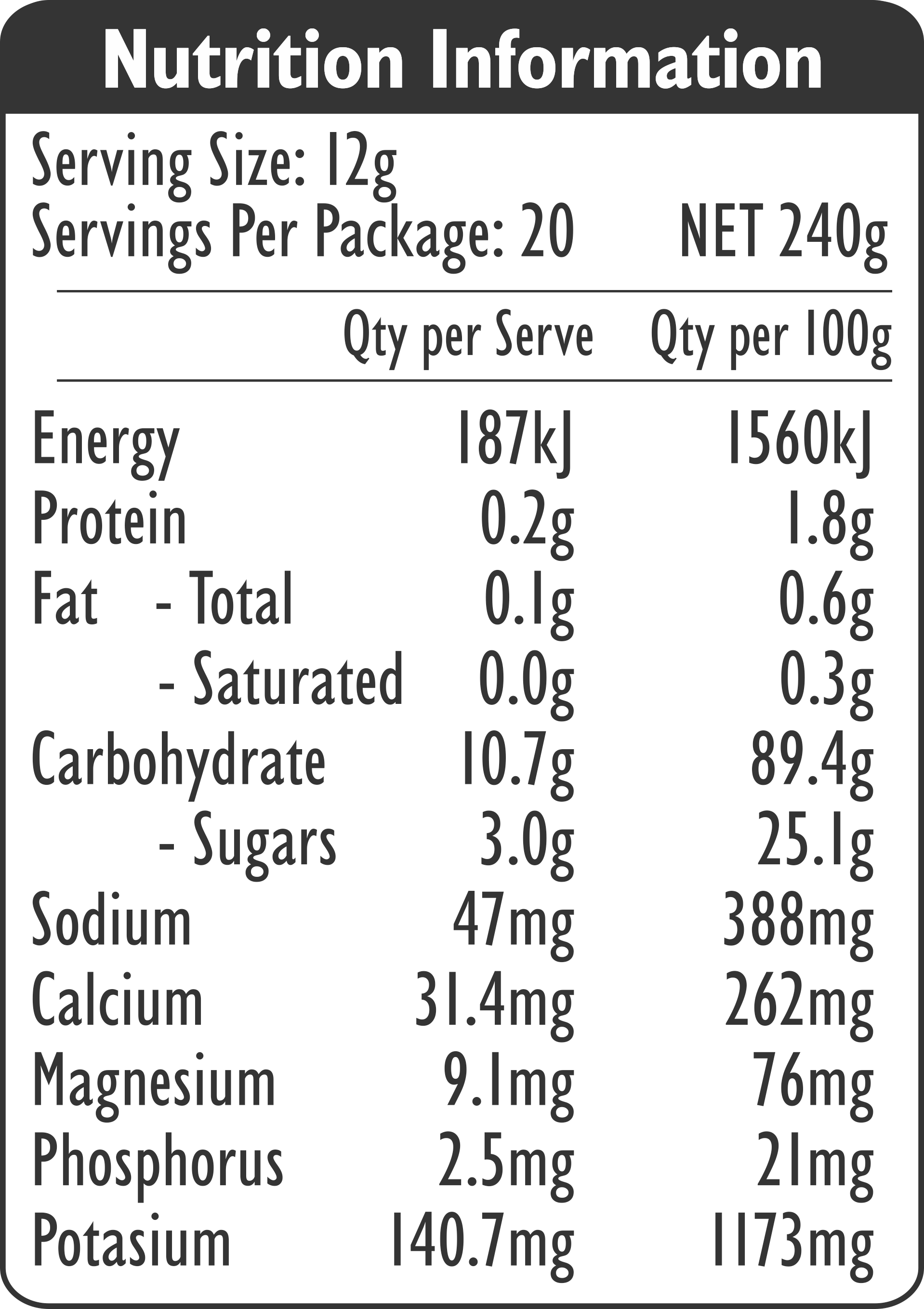





Post a Comment for "39 how to read uk nutrition labels"